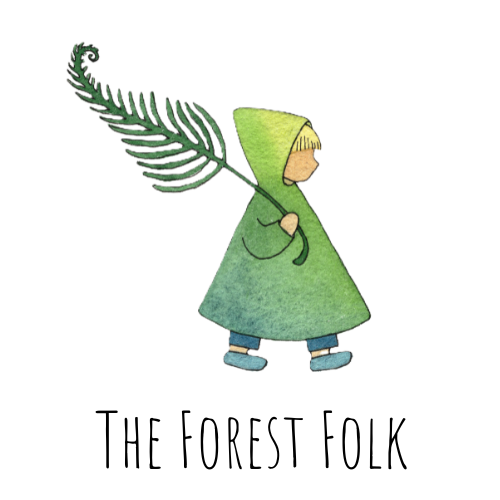Mindfulness is the focus of attention on the moment. It’s about
being aware of the present and letting go of any thoughts and worries that may arise for you. And it reduces stress and boosts your quality of life if practised regularly.
Studies have shown that mindfulness for children can:
- improve their mental health and wellbeing.
- develop social skills.
- boosts empathy and self-compassion.
Simple mindful activities have long-lasting developmental impacts
when they are practised regularly, but it can be confusing for parents to know what activities to implement so that they can support and promote mindfulness at home. To understand what can help your child in becoming more mindful, it’s important to firstly know what mindfulness is.
What is Mindfulness?
Mindfulness is a form of meditation where you focus on being aware of what you’re sensing and feeling at that moment. There is no interpretation of thoughts or judgement of feelings. Mindfulness is the practice of breathing techniques, directed imagery and other practices that relax and calm the body and mind to relieve stress.
Mindfulness is effective in reducing stress and has positive
effects on anxiety, pain, depression, insomnia, and high blood pressure. It’s said to encourage better life balance and can help your child accept emotions and thoughts as they experience them. It also promotes emotional well-being, and the ability to cope with life adversities.
Studies also suggest that mindfulness practice can lead to improvements in executive functioning. With regular practice, mindfulness can positively impact and improve behavioural regulation, and metacognition, which is the awareness of one’s own thought process.
Practising mindfulness can be empowering for children, but what
can you do as their parent to provide mindful activities that engage them?
Here are 5 fun and easy mindfulness activities for children:
There are so many mindful games out there that are great for children. Board games, pick-up sticks, and even card games are great ways to engage your child and help them stay mindful when working or playing with the task in front of them.
Studies have shown that when children play games in general, they are more engaged and able to focus better. They are also more happy, confident, and optimistic. Playing games promotes well-being and allows them to develop a sense of identity, connectedness, security, growth, and joy.
Studies have found that colouring-in improves stress management and is a practical alternative to relaxation breathing. When combined with breathing techniques, meditation, and mindfulness, the simple act of colouring-in has the potential to be a fun and
mindful activity that improves your child’s wellbeing.
The concept of mindful colouring is that the act itself provides an
opportunity to suppress inner dialogue and engage in an activity that prevents the flow of unhelpful self-talk that often floods our minds. In other words, it’s an effective way to meditate as it switches off the mind to focus on the present.
Like colouring, journaling, or writing is considered a simple way to implement mindfulness if your child struggles to meditate or sit still and be present. Journaling shares a lot of benefits with mindfulness. It sharpens focus, increases positive thought, and eases negative self-talk. Journaling is a tool that helps to turn your child’s attention inwards, which promotes metacognition and self-awareness. The best part is that this activity can be performed anywhere and at almost any age.
Going on an adventure is a creative and mindful activity that helps to redirect your child’s focus away from stress and anxiety.
Incorporating physical exercise into their adventure activity is a positive collaboration as it adds to the health benefits of exercise and mindfulness. It’s a great way to build positive energy within the body and helps them to have a mental break from the day.
Take your child for a walk and get them to start paying close attention to their senses. Noticing the feel of the air, and the sounds around them will help them to stay in the moment as they pay attention to the movements and things around them. Get them to notice plants and touch rocks as you explore. And remember to keep quiet while you’re on your adventure to allow them to notice the small details.
Creating a mindful jar, or bottle is a great activity from start to finish. Add glitter, glue, glitter glue, colouring, Lego pieces, mini figurines…the options are endless. The jar or bottle can be
unique to your child by simply adding things together that they love. The best part is that the mindful jar or bottle is something that can be kept as a tool for mindfulness or calming down later on.
Teach your child to shake their mindful jar when they feel anxious or upset, and then complete big calming breaths together as the glitter settles.
The great thing about mindfulness is that everyday things can be
turned into mindful activities. From being present when you and your child eat, to reading a book; You can bring mindful awareness to an otherwise ordinary activity.
Practising mindfulness with your child daily will support your
child as they learn to self-regulate. Assign a designated spot that is for
mindfulness only and don’t forget to share your own experiences with your child on what you find challenging and what you find easy about mindfulness. Get them to share their experience with you too.
The developmental stages during childhood and adolescence are
critical in constructing your child’s mental health in the adult developmental stage. Encouraging mindfulness regularly will significantly improve their mental well-being, concentration and social competency and have a lifelong impact on their psychological, social, emotional, and cognitive health.

